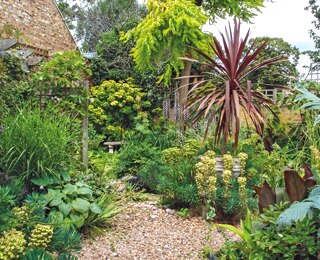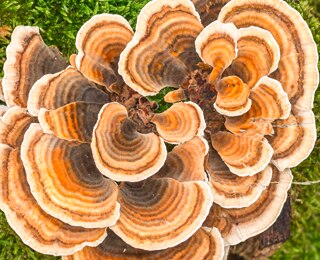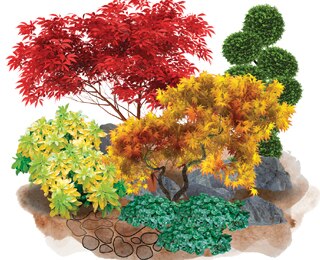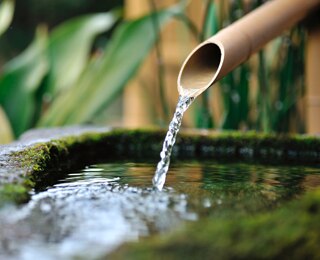|
|
November issue,
on sale now!
Follow our colour-wise guide to a
spectacular autumn finale, with sizzling scarlet, sunshine yellow and royal
purple flowers, berries and foliage.
|
|
| design solutions |
|
Japanese chic
This month we show you how to create an oriental look in a small, shady courtyard, using Japanese plants, a tsukubai water basin, mossy rocks and gravel...
|
|
| Gourmet garden |
 |
|
Mists & mellow fruits
We pick the best trees and shrubs for fabulous seasonal fruits. From purple callicarpa berries to edible plums and gages - there's a stunning tree for every garden...
|
| EXPERT ADVICE |
 |
|
Learn how to layer
Designing a new garden layout is easy - just follow Noel Kingsbury’s expert advice on using mix and match plants to bring height and interest to a new garden...
|
|
| welcome wildlife |
 |
|
Treasure toadstools
From turkey tails to puffballs, we take a look at the virtues and benefits of our weird and wonderful native fungi...
|
| Garden inspiration |
 |
|
Create a quiet corner of Japan
Get your fix of fiery foliage with this month’s border planner, teaming acers with evergreen box and choisya to create a leafy display...
|
|
| GARDEN Ideas |
|
Make a rosehip heart
This lovely rosehip wreath makes a colourful autumn decoration for the house or garden. Rosehips (and other autumn berries) can provide such a vibrant display...
|
|
| Three top tips for Japanese acer care |
|
1. How and where to plant?
The perfect soil for acers is free draining but rich in organic matter and slightly acidic, but these trees will thrive in most soils apart from the very alkaline or very wet.
Japanese acers come from forested areas, so add plenty of leafmould or compost to the area that you plan to plant.
|
|
|
They need a sheltered position in part shade – avoid full sun and wind, which will dry our and scorch the leaves. They also need a little breathing space around them as they don't like close competition from other plants.
2. Growing in a container
If your soil doesn’t suit Japanese acers, they are easy to grow in containers too. Plant them in a container slightly larger than their original pot, using loam-based compost rich in organic matter such as John Innes No. 2. Position the container in a sheltered position and take care to water regularly, as containers dry out quickly. Repot into a larger container every two or three years.
3. How and when to prune
Japanese acers are best left to grow into their natural shape without pruning, but sometimes dead or rubbing stems under the main canopy need to be removed and occasionally branches that are growing at an odd angle need to be pruned back to the main trunk. Always prune between November and January, as spring pruning can lead to unsightly sap bleeding from the cuts, using loppers.
|
| COMPETITION |
|
Win a £2500 Christmas bundle
Let us help make Christmas extra special for you!
All you need to do is enter your email address! AND, you can enter every day until the 11th November 2016...
|
|
| Privacy Policy | Terms & Conditions | Unsubscribe |
Bauer Consumer Media Limited (a company registered in England & Wales, at Media House, Peterborough Business Park, Lynch Wood, Peterborough, PE2 6EA, under no. 01176085).
© Copyright 2016, Bauer Consumer Media Limited. |
|









